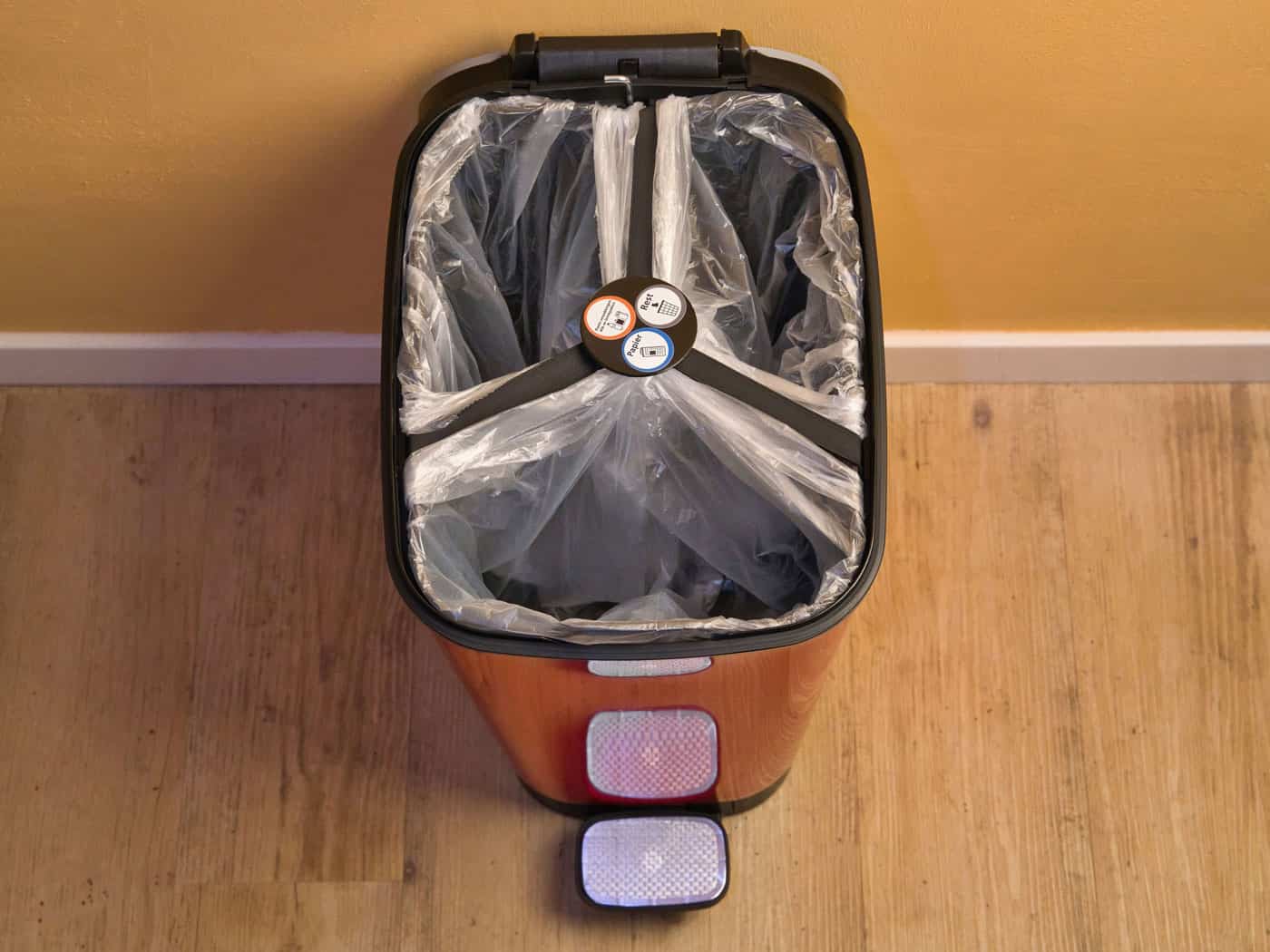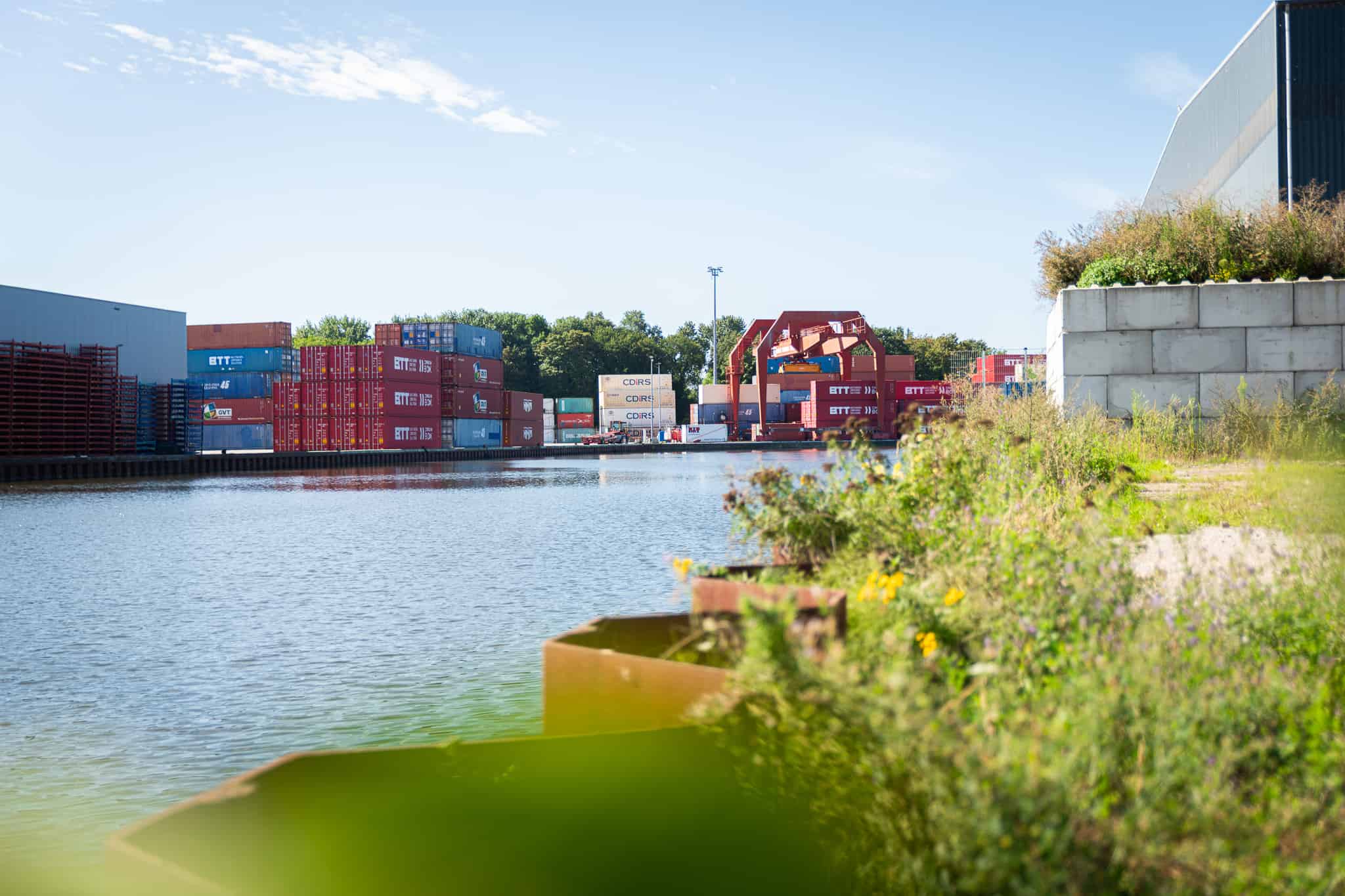
About Vriflex
- Founders: Patricia de Vries
- Founded in: 2020
- Employees: 1
- Money raised: Everything is invested back into the company
- Ultimate goal: Making Vriflex the most affordable and sustainable applied technology in waste separation at the source, so that it can be done even more efficiently anywhere, anytime
There is no need to repeat how important waste separation is. But finding ways to efficiently separate waste at home is something quite different. Waste bins for waste separation are prohibitively expensive. Patricia de Vries came up with a solution: the Vriflex. She talks to us about it in this instalment of Start-up of the day.
How did you come up with the idea?
“At the end of 2019, we received a message from the municipality that we had to dispose of our waste in another way. From now on, we could throw our residual waste in an underground container located further away in our village. Which also meant that from now on, we had to pay for our waste disposal each time. ‘We have to handle this properly, because we can save money with this,’ is what I told my family. At that time, the weather was still relatively nice. It was not such a big deal to walk a short distance each time to dispose our trash. As it got colder, we started thinking more and more about how to take that waste separation indoors.
So I called a trash can manufacturer, since I ‘d bought a new trash can from them a few months earlier, and asked if they had something so I could already separate the waste in that trash can. They didn’t have anything like that and it was going to stay that way, they said. Because of that, I started looking for waste separation systems. That search was disappointing because everything turned out to be extremely expensive. We wanted a simple and affordable solution. And that’s how Vriflex was born.”
You founded your company during the time of corona. What was that like?
“We were stuck at home with the whole family. Everyone started getting involved at one point. Both of my daughters were totally into it and began to get involved more and more actively. It helps that both my husband and I have a technical background. Though it wasn’t the case that the product looked the way it does now from the very beginning. We’ve adapted the first model several times. In the beginning, the Vriflex still had colors. That’s not very helpful for people who are color-blind, so we had to change that. Now symbols indicate which compartment should contain which type of waste. Another stroke of luck was that we found out fairly early on that our product could basically fit on any type of bin.”
Had any thought been given to that or was it pure luck?
“That was a coincidence. We needed it for our trash bin that’s downstairs. That one has a different shape than our pedal bins upstairs. One is round and the other is oblong, but it fit both. That was our eureka moment.”

How did you come up with the name ‘Vriflex’?
” In order to protect our product, we wanted to apply for a patent. This kind of application often takes a really long time. In order to do something about protecting it in the intervening period, we decided to register our product as a trademark. Then, of course, you also need a name. We wanted something with ‘flex’ in it anyway, because our product is flexible. My friend’s surname is Pronk and mine is De Vries: ‘Proflex’ already existed, but ‘Vriflex’ didn’t yet. So we managed to figure it out pretty quickly.”
How do you go about selling your product?
“I did some market research beforehand. I also put together a user panel. I asked the people on the panel mainly what they thought about the product, what could be improved and whether they would buy it. This panel still advises us. Fortunately, those conversations showed that there is a lot of demand for a new product that makes waste separation more enjoyable, cheaper and easier.
I also launched a webshop and started selling my product on Bol.com. Although I mainly reach individual customers through the webshop and Bol. I approach my business clients by simply phoning them up, stopping by and telling my story.”

What are your goals for the future?
“We have already looked briefly at other materials that we could use to make a Vriflex. A large part of the Vriflex is recyclable and all the materials come from Europe. That was a conscious choice.
We are also planning to work even more closely with other entrepreneurs from Gelderland. I have become a member of a community of sustainable entrepreneurs who are also keen to make the waste separation process even more efficient. But we also exchange all kinds of information there and do stuff together. Last week, for example, we recorded a new corporate video. I find that kind of thing a lot of fun to do.
Plus, we also want to market Vriflex in other European countries, the United States and China. Our aim is for partners to produce Vriflex locally in those countries. We’re now in the process of looking for parties who are willing to take that up. Because we deliberately do not export for sustainability reasons.”
What tip would you like to give to other start-ups?
“Keep on going. Even if it’s tough and you’re struggling: keep on going. That’s what it’s all about in this society. If you have a good idea and you want to start a business with it, then you should just do it. Trying to figure everything out in advance makes no sense, because setting up a business never goes perfectly and according to plan. You run into something, you find a solution and you keep on going. That’s how you make those little steps until you get to the position you’ve always dreamed of.”








